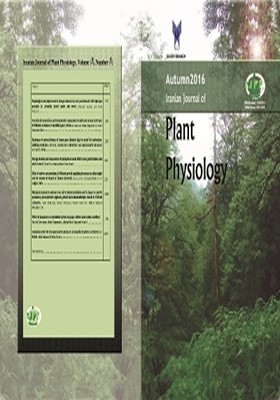-
-
List of Articles
-
Open Access Article
1 - Physiological and phytochemical changes induced by seed pretreatment with hydrogen peroxide in Artemisia sieberi under salt stress.
Forouzan Azimian Parto Roshandel -
Open Access Article
2 - Essential oil composition and total phenolic compounds of naked and normal seed types of different accessions of Cucurbita pepo L. in Iran .
Forouzandeh Soltani Roghayeh Karimi Abodlkarim Kashi -
Open Access Article
3 - Resistance of various biotypes of Canary grass (phalaris. Spp) to acetyl-CoA carboxylase-inhibiting herbicides.
Rahil Abdi Eskandar Zand Mohammad Reza Naghavi Jahanfar Daneshiyan Nour Ali Ghiasi -
Open Access Article
4 - Storage duration and temperature of hydroprimed seeds affects some growth indices and yield of wheat.
Zeinab Farajollahi Hamid Reza Eisvand -
Open Access Article
5 - Effect of various concentrations of different growth regulating hormones on callus weight and the amount of thymol of Thymus daenensis.
Roksana Saleh Mahlagha Ghorbanli Sedighe Khalife -
Open Access Article
6 - Biological removal of cadmium from soil by phytoremediation and its impact on growth parameters, photosynthetic pigments, phenol and malondealdehyde content in Vetiveria zizianoides.
Azhir Khalil Aria Hossein Abbaspour Sekineh Saeidi Sar Mohsen Dehghani Ghanatghestani -
Open Access Article
7 - Effects of phosphorus on antioxidant system in pepper cultivars under saline conditions.
Behrokh Daei-hassani Nader Chaparzadeh Leila Sartibi Masoumeh Abedini -
Open Access Article
8 - Evaluation of the effect of plant growth substances on longevity of gerbera cut flowers cv. Sorbet.
Elham Danaee Vahid Abdossi -
Open Access Article
9 - Farsi Abstracts
-
The rights to this website are owned by the Raimag Press Management System.
Copyright © 2021-2025







